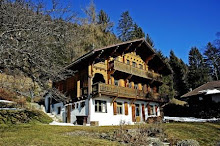 Lord of the Flies and the Lord of Creation
Lord of the Flies and the Lord of CreationTomorrow is Yom Hashoah, which is Holocaust Remembrance Day. This is an important day to remember what godless human beings are capable of, what we are capable of, without the divine intervention of God. I am also reminded of William Golding’s novel, The Lord of the Flies. When he wrote his novel, Golding was wrestling with the disturbing realities of the Holocaust that was still coming to light in the late forties and early fifties. How could such a civilized, refined and advanced culture (Germans) be so ruthless, barbaric and evil? How could the 20th Century, the great century of promise, end up being one of the bloodiest centuries in human history?
Golding’s premise is that evil is inherent in all humanity. Golding argued that if human beings find themselves immersed in a deluge of fear and chaos, then the evil within them will surface. This is the scenario he creates on his deserted island filled with stranded British schoolboys.
Ever since William Golding published The Lord of the Flies, in 1953, his novel has been a staple text in English-speaking classrooms around the globe. Students and teachers have wrestled with Golding’s ideas about evil. The story about civilized, well-bred school children becoming ruthless savages and murderers is just as disturbing today as when it was published—perhaps more so given the recent onslaught of school-age killings all over the globe.
If you are familiar with the novel, then you will know that the boys establish a democracy to govern themselves. But it doesn’t take long before the democracy deteriorates and a self-serving, fascist-like dictatorship emerges. Fear of a “beastie” on the island combined with general disorder leads to the rise of evil. Three children die in the story: one is killed as a result of negligence. A second is murdered while the children are chaotically dancing and in a state of terror. A third is murdered deliberately and calculatingly.
As the microcosmic civilisation declines on the island, so does the macrocosm of the global civilization. Golding sets his book in a fictional Nuclear Holocaust, where fear and chaos on a global scale has resulted in a globally destructive nuclear war. As the nuclear war lays waste to the planet, the island is likewise destroyed by a fire the boys start in order to smoke out and murder a boy named Ralph. The boy, Ralph, who at the outset of the novel was the democratically elected leader, becomes the hunted at the end of the novel.
All is lost, so it seems, until a British Naval officer appears and rescues Ralph and the boys. The officer’s presence intervenes and, with his Battle Cruiser and weapons, restores order and a sense of safety. The irony is that the boys are rescued from a wasted and destroyed paradisiacal island, only to be delivered to a wasted and destroyed planet. Golding leaves his readers with a resonating question: who will intervene for humanity? Who will save us from our own evil?
Golding has no answer to give. Looking to Freud, Golding tries to explain the “good” in humanity as the result of the “superego”—a sense of shame and guilt imposed on us by our parents and authority figures. The superego suppresses our animalistic and evil desires, which he dubs the “id.”
If Golding only understood that man is created in the image of God and we bear His communicable attributes of goodness and kindness and mercy and compassion... If only Golding understood that the Lord of all Creation is sovereign over the affairs of men, restraining us from the total depravity, of which we are capable... If only Golding understood that there is indeed a Saviour who not only forgives us of our evil deeds, but also empowers us to live righteously. Golding asks, “Who will save us?” The answer is Jesus.





1 comment:
There is a boy on the island who acts as a Christ-figure. The boy’s name is Simon. It is Simon who is murdered during a wild night of fear and chaos. Simon was attempting to tell the others that there is no beast on the island and that there was nothing “out there” to fear. Simon came to understand that the only danger was the evil that would emerge in the boys themselves when fear and chaos are present. He hoped to save the boys by removing the element of fear. Unfortunately, the boys are too far gone and they supposedly mistake Simon for the beast and brutally tear him to shreds. Simon, the Christ figure, is dead. Golding believed that Jesus was treated the same way. He came to save humanity, but we killed him instead. He is right, except that Jesus did not stay dead. He rose from the dead. What a difference the Gospel makes! Where there is no hope, Jesus shines as the greatest hope of all.
Post a Comment